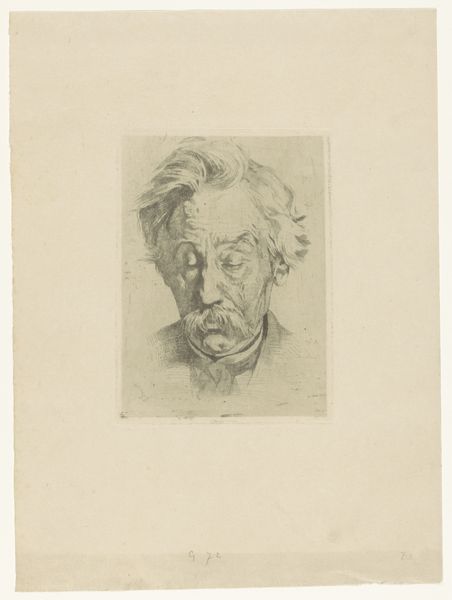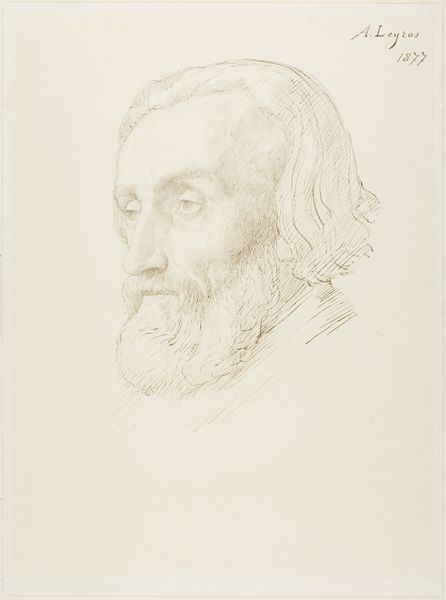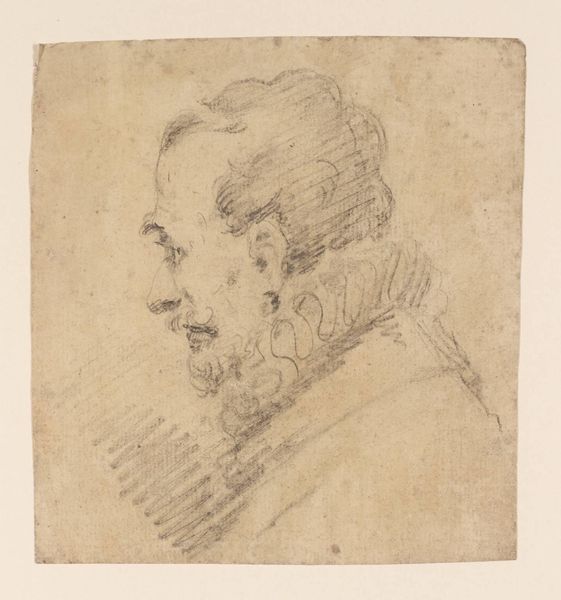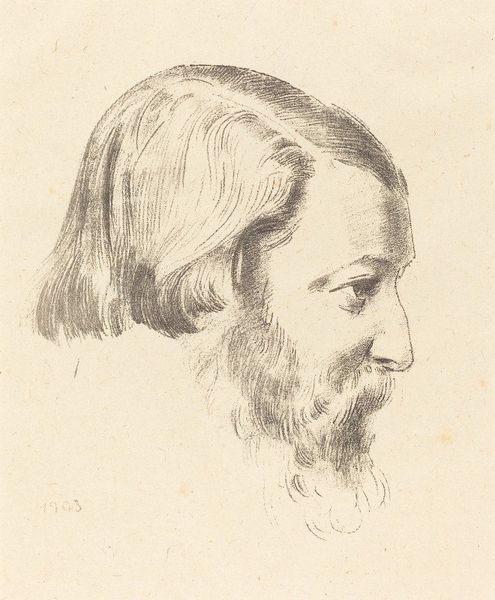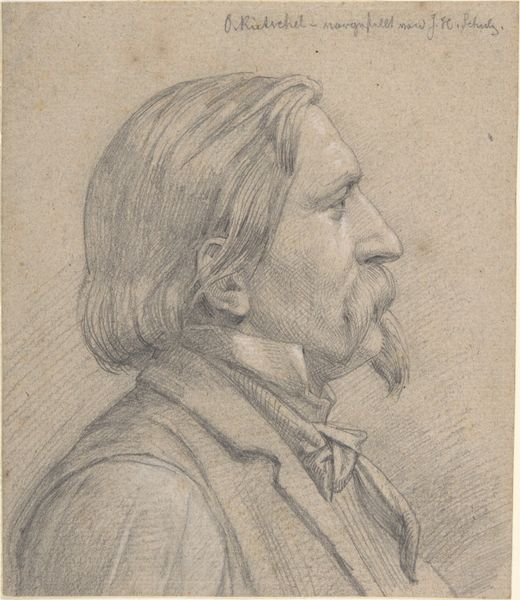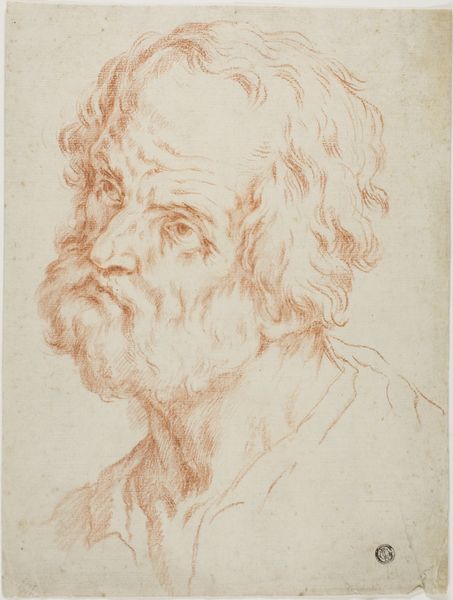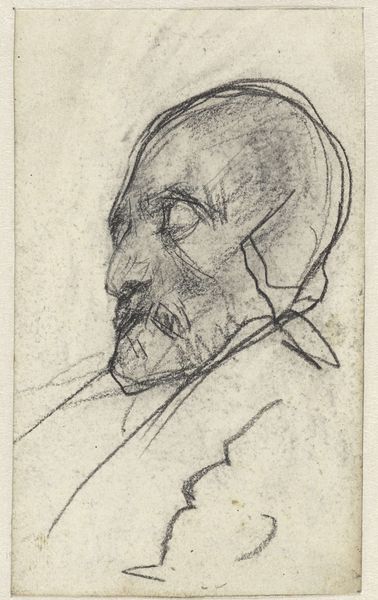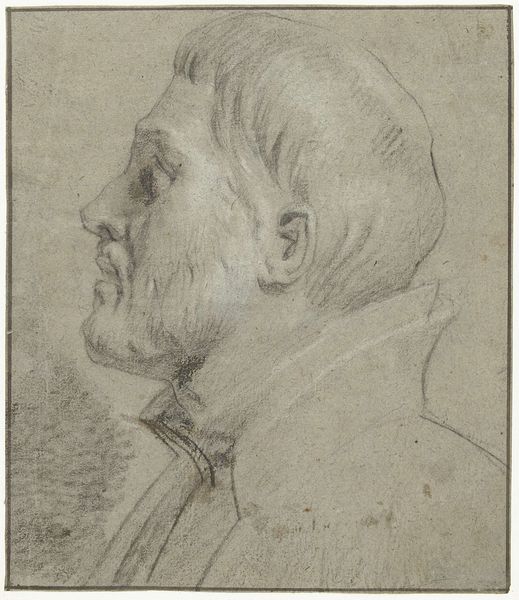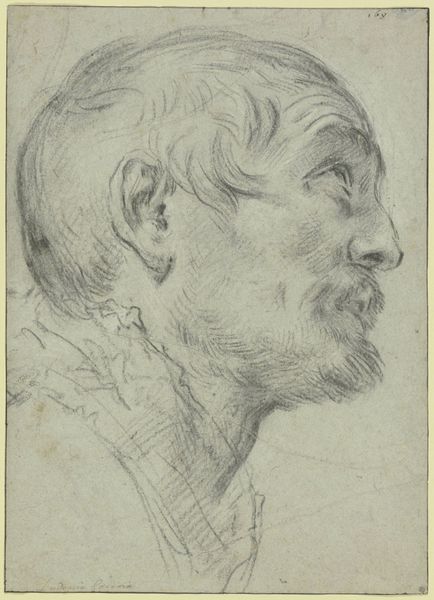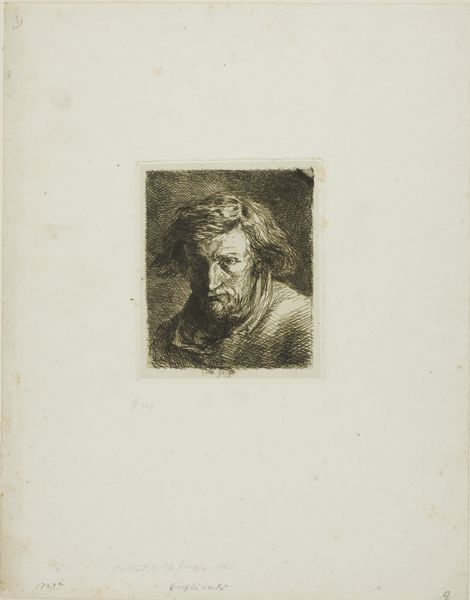
drawing, pencil
#
drawing
#
baroque
#
pencil
Dimensions: height 316 mm, width 236 mm
Copyright: Rijks Museum: Open Domain
Curator: Here we have "Bust of Cardinal Richelieu," an anonymous pencil drawing from sometime between 1622 and 1700, part of the Rijksmuseum collection. Editor: The delicacy of the medium contrasts sharply with the sheer forcefulness projected by the subject. It is quite a severe and controlled face that they rendered. Curator: Indeed. Cardinal Richelieu, as a historical figure, was all about control, centralization of power, and the advancement of France as a European power. The drawing, though unsigned, gives us insight into how Richelieu wanted to be seen. Editor: Look closely at the line work; see how the artist uses subtle gradations to capture light and shadow across his face. There is a masterful economy of means here. They managed to convey a substantial degree of character. Curator: The choice to depict him in this way is very telling, too. Not as a religious figure, per se, but as a man of state. A leader. We see the vestments are simplified. The focus is not piety but on Richelieu, the politician. The collar and hint of armor beneath signal worldly power. Editor: Precisely. Notice how the eyes are rendered: deeply set, almost like he is studying or scrutinizing someone. They avoided a straightforward frontal gaze that would confront you, which also amplifies a feeling of circumspection. Curator: He was known for his political maneuvering and intellect. This sketch is Baroque in style, which typically emphasizes drama, but here, that drama is internal, almost understated. Consider this piece within the context of portraiture and propaganda, shaping public image. Editor: Agreed. Considering the context and how someone sees such artistry, the rendering seems like a fragment or preliminary idea. But such "incompleteness" lends itself to a timelessness. One might still engage with a similar drawing today. Curator: Ultimately, whether it was preparatory or not, the drawing captures a historical persona and reflects the power structures and social expectations of its era. Editor: And through its elegant simplicity, the skill and detail make the most captivating and enduring impression.
Comments
No comments
Be the first to comment and join the conversation on the ultimate creative platform.
